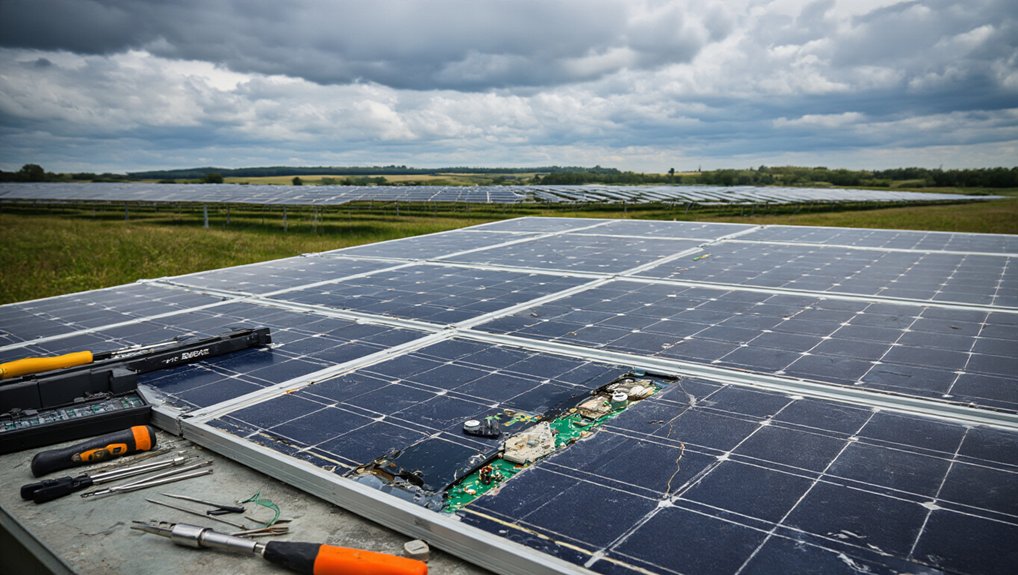Solar panels break. That’s the inconvenient truth nobody wants to talk about when they’re busy patting themselves on the back for going green. But here’s the twist: instead of rushing to recycle these busted panels, maybe, just maybe, we should try fixing them first.
The math is embarrassingly simple. Repairing solar panels keeps them working longer, which means less junk in landfills and fewer dollars spent on those complicated, expensive recycling processes that barely work anyway. Current recycling methods recover about 35% of a panel’s economic value. That’s pathetic. Even with fancy advanced tech, they only hit 95%. Meanwhile, a simple repair could keep the whole thing running for years.
Current recycling recovers 35% value. Repairs keep panels running for years. Do the math.
This isn’t rocket science. Many panel failures come down to minor issues like faulty solder joints or bypass diodes. Fix those, and boom, you’ve got a working panel again. But no, the industry would rather ship everything off to recycling facilities that don’t really exist in most places. The EPA sometimes classifies these panels as hazardous waste, which makes disposal costs skyrocket and logistics a nightmare. In fact, California allows landfill disposal of panels after verification as non-hazardous at a cost of $1,500.
Here’s where it gets interesting. Repaired panels can be sold cheaper, opening up solar power to markets that can’t afford the shiny new stuff. Service businesses focused on fixing panels are popping up everywhere, creating jobs and keeping perfectly good equipment out of the trash. It’s capitalism meets environmentalism, and somehow it actually works.
The environmental benefits are obvious to anyone paying attention. Every repaired panel means less energy wasted on recycling, fewer virgin materials ripped from the earth, and reduced pressure on our already overwhelmed waste systems. The global solar panel recycling market is projected to reach $1.7 billion by 2028, money that could be partially redirected to repair initiatives. Repair-first strategies align perfectly with circular economy principles, though that phrase probably makes corporate sustainability officers feel warm and fuzzy inside.
Industry data shows high success rates for restoring “defective” panels. Pilot programs prove it works. The technology exists. The economic incentives are there. With solar power costing just $0.049/kWh compared to traditional sources, extending panel life through repair makes even more economic sense. Yet here we are, still treating fixable panels like disposable razors. Maybe it’s time the solar industry learned what every homeowner already knows: sometimes the smart move is grabbing a screwdriver instead of calling for a replacement.
References
- https://www.energy.gov/eere/solar/articles/beyond-recycling-reducing-waste-solar-modules-theyre-even-made
- https://e360.yale.edu/features/solar-energy-panels-recycling
- https://www.bccresearch.com/market-research/energy-and-resources/solar-panel-recycling-market.html
- https://earth911.com/eco-tech/the-state-of-solar-panel-recycling-in-the-u-s/
- https://www.winssolutions.org/solar-panels-create-growing-recycling-crisis/









